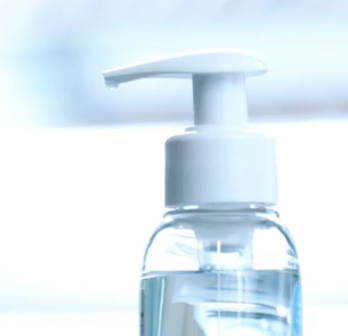| "Descrizione" by Whiz35 (11840 pt) | 2022-Dec-19 19:50 |
Review Consensus: 10 Rating: 10 Number of users: 1
| Evaluation | N. Experts | Evaluation | N. Experts |
|---|---|---|---|
| 1 | 6 | ||
| 2 | 7 | ||
| 3 | 8 | ||
| 4 | 9 | ||
| 5 | 10 |
1,2-dihydroxyhexane (1,2-hexanediol) is a chemical compound, alkanediol (alkanediols are composed of alkane and diol and are used as alternative antimicrobial preservatives for dermal formulations, hydrophilic creams, etc.) and has an amphiphilic structure, that is, it contains both a hydrophilic and a hydrophobic group. For this characteristic it has antimicrobial properties.
It has an appearance of colorless liquid. Can be mixed with water, lower aliphatic hydrocarbons and fatty acids.

A synthetic preservative that belongs to the molecular glycols.
(The review is constantly updated as the most recent studies are published)
What it is used for
It has antimicrobial activity and is included in cosmetic, personal care and hygiene product formulations as a preservative. As a solvent, it can dissolve or disperse surfactants, oils, dyes, aromas, bactericidal preservatives. It possesses permeability and good dispersing capacity for inorganic substances.
Where it is used
- Pesticides. Stabilizer
- Diesel engines. Antifreeze
- Automotive. Car brake fluid
- Paper. Printing ink.
- Wood. Preservative
- Medicine. Disinfectant
- Textile. Penetration agent
1,2-hexanediol tends to replace Parabens in the cosmetic industry. Parabens are used as antimicrobial preservatives in consumer products. Exposure to Methylparaben (MP) has been associated with negative health outcomes; therefore, 1,2-hexanediol has been introduced in the cosmetic field whose acute and chronic toxic effects are generally lower than those of Methylparaben but its effects on aquatic organisms should not be ignored (1).
Safety
The objective of this study was to investigate the percutaneous absorption of metronidazole (MTZ) in the topical formulations containing a combination of 1,4-cyclohexanediol and 1,2-hexanediol. Observations provide insight in formulating superior topical formulations with minimized potential systematic toxicity while maintaining therapeutic efficiency. A mechanistic explanation of the observed synergistic effect is proposed (3).
To study the potential for delayed Type IV dermal sensitivity of a new preservative system containing 1,2-hexanediol and caprylyl glycol, 200-subject repeat insult patch tests were performed with a 15% mixture of 1,2-hexanediol and caprylyl glycol (equal parts of the 2 ingredients) in carbomer gel and a cosmetic formulation at an actual use concentration. No delayed Type IV hypersensitivity reactions were observed (3).
Typical optimal characteristics of 1,2-hexanediol as commercial product
| Density | 1.0±0.1 g/cm3 |
| Boiling Point | 223.5±0.0 °C a 760 mmHg |
| Melting Point | 45ºC |
| Flash Point | 95.8±13.0 °C |
| PSA | 40.46000 |
| LogP | 0.25 |
| Vapour Pressure | 0.0±0.9 mmHg at 25°C |
| Refraction Index | n20/D 1.442(lit.) |
| Shell life | 24 mesi |
 |  |
 |  |
- Linear Formula: CH3(CH2)3CH(OH)CH2OH
- Molecular Formula: C6H14O2
- Molecular Weight: 118.17
- Exact Mass 118.099380
- CAS: 6920-22-5
- EC Number: 230-029-6
- PubChem Substance ID 24852791
- MDL number MFCD00010737
- Beilstein Registry Number 1719244
- DSSTox Substance ID
- IUPAC hexane-1,2-diol
- InChI=1S/C6H14O2/c1-2-3-4-6(8)5-7/h6-8H,2-5H2,1H3
- InChl Key FHKSXSQHXQEMOK-UHFFFAOYSA-N
- SMILES CCCCC(CO)O
Synonyms:
- hexane-1,2-diol
- 1,2-hexane diol
- DL-1,2-Hexanediol
- dl-hexane-1,2-diol
- 1,2-Dihydroxyhexane
- 5,6-Dihydroxyhexane
- 1,2-Hexylene Glycol
- 2,2,6,6-Tetrakis(hydroxymEt)cyclohexanol
References_________________________________________________________________
(1) Lee J, Park N, Kho Y, Lee K, Ji K. Phototoxicity and chronic toxicity of methyl paraben and 1,2-hexanediol in Daphnia magna. Ecotoxicology. 2017 Jan;26(1):81-89. doi: 10.1007/s10646-016-1743-6.
(2) Li N, Jia W, Zhang Y, Tan F, Zhang J. Synergistic effect of 1,4-cyclohexanediol and 1,2-hexanediol on percutaneous absorption and penetration of metronidazole. Int J Pharm. 2011 Aug 30;415(1-2):169-74. doi: 10.1016/j.ijpharm.2011.05.069.
(3) Levy SB, Dulichan AM, Helman M. Safety of a preservative system containing 1,2-hexanediol and caprylyl glycol. Cutan Ocul Toxicol. 2009;28(1):23-4. doi: 10.1080/15569520802636082.
| Evaluate |

